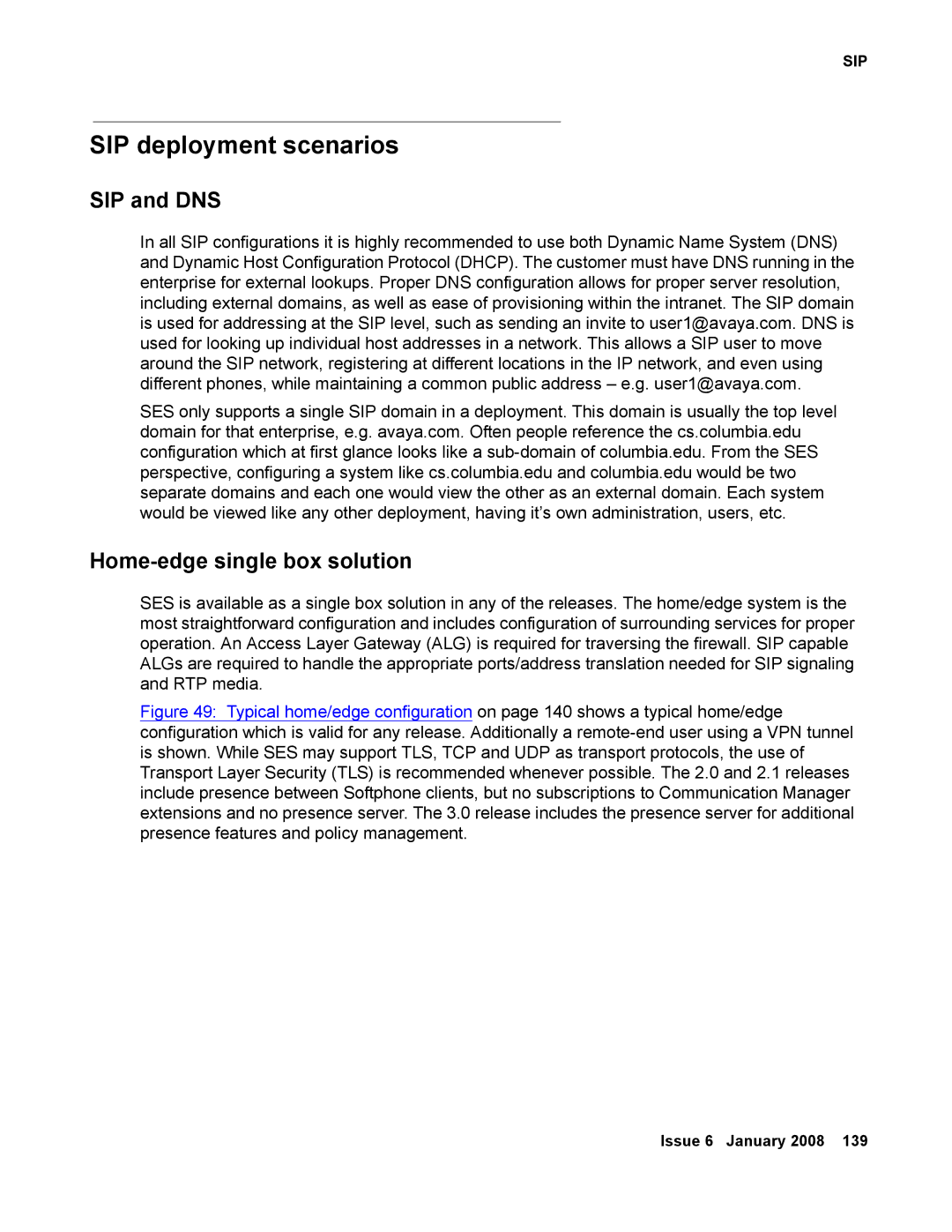SIP
SIP deployment scenarios
SIP and DNS
In all SIP configurations it is highly recommended to use both Dynamic Name System (DNS) and Dynamic Host Configuration Protocol (DHCP). The customer must have DNS running in the enterprise for external lookups. Proper DNS configuration allows for proper server resolution, including external domains, as well as ease of provisioning within the intranet. The SIP domain is used for addressing at the SIP level, such as sending an invite to user1@avaya.com. DNS is used for looking up individual host addresses in a network. This allows a SIP user to move around the SIP network, registering at different locations in the IP network, and even using different phones, while maintaining a common public address – e.g. user1@avaya.com.
SES only supports a single SIP domain in a deployment. This domain is usually the top level domain for that enterprise, e.g. avaya.com. Often people reference the cs.columbia.edu configuration which at first glance looks like a
Home-edge single box solution
SES is available as a single box solution in any of the releases. The home/edge system is the most straightforward configuration and includes configuration of surrounding services for proper operation. An Access Layer Gateway (ALG) is required for traversing the firewall. SIP capable ALGs are required to handle the appropriate ports/address translation needed for SIP signaling and RTP media.
Figure 49: Typical home/edge configuration on page 140 shows a typical home/edge configuration which is valid for any release. Additionally a remote-end user using a VPN tunnel is shown. While SES may support TLS, TCP and UDP as transport protocols, the use of Transport Layer Security (TLS) is recommended whenever possible. The 2.0 and 2.1 releases include presence between Softphone clients, but no subscriptions to Communication Manager extensions and no presence server. The 3.0 release includes the presence server for additional presence features and policy management.
Issue 6 January 2008 139
